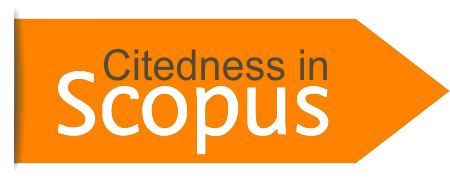About the Journal
Focus and Scope
Rekayasa Sipil is a forum for researchers, students, and professionals who want to publish their writing or research. This journal is focused on scientific development in Civil Engineering subject, including structural mechanic, construction management, water resource, geotechnical, and transportation engineering.
Innovation in Material Science and Engineering
This scope includes modeling, research, and application of concrete (i.e., Self-Compacting Concrete (SCC), Self-Healing Concrete (SHC), High Strength Concrete (SHC), and so on), steel (hot-rolled and cold-formed), polymers, fibers, and asphalt technology. It also accommodates environmentally friendly building materials such as slag, fly ash, Recycled Concrete Aggregate (RCA), etc.
Structural and Earthquake Engineering
This scope concerns the structural design, analysis, modeling, research, and application of buildings, bridges, towers, tunnels, and other structures under static, cyclic, or dynamic load. Earthquake engineering is used to understand the interaction between the structural element with the earthquake load. Structural design includes strength, stability, safety, and comfortability, while analysis, modeling, and research concern structural behavior and performance, including strength, deformation, stiffness, rotation, ductility, etc.
Geotechnical Engineering
This scope covers rock and soil to support the upper structure properly. This scope also includes foundations, retaining walls, and other structures. The study also covers groundwater, landslide prevention, landfill, etc. The investigated parameters include strength, stiffness, dilatancy, etc.
Environmental Engineering
This scope studies sanitary engineering, hazardous waste and pollution management, environmental remediation, green engineering, industrial ecology, water purification, wastewater treatment, and many more.
Transportation Engineering
This scope deals with moving people and goods from the origin to the destination. This scope involves the design, construction, and maintenance of transportation infrastructure (streets, canals, highways, railways, airports, ports, mass transits, and so on). The study also includes traffic engineering, queueing theory, urban engineering, pavement, Intelligent Transportation Systems (ITS), infrastructure management, and many more.
Construction Management
This scope includes estimating, reviewing, and applying the project’s schedule, cost, quality, safety, scope, and function management.
Forensic Engineering
This scope deals with the investigation of the structural condition using some structural testing (destructive and Non-Destructive Test (NDT)) to understand the cause and location of structural failure or why it does not operate or function as intended. This scope also helps society to solve structural problems or improve structural performance.
Peer Review Process
The editorial staff checks all submitted manuscript, and only those papers that seem most likely to meet our editorial criteria are sent for formal review. All forms of published correction may also be peer-reviewed at the editor's discretion. Reviewer selection is critical to the publication process, and we base our choice on many factors, including expertise, reputation, and specific recommendations. Whole review process are in double-blind peer review method managed by the Editor. Name and affiliation of authors are guaranteed to be unpublished.
Open Access Policy
This journal provides immediate open access to its content on the principle that making research freely available to the public supports a greater global exchange of knowledge. We follow the Creative Commons Attribution (CC BY) which let others distribute and copy the article, to create extracts, abstracts and other revised versions, adaptations or derivative works of or from an article (such as translation), to include in a collective work (such as an anthology), to text or data mine the article, even for commercial purposes, as long as they credit the author(s), do not represent the author as endorsing their adaptation of the article, and do not modify the article in such a way as to damage the author's honor or reputation.
Archiving
We use LOCKSS and CLOCKSS to the distribution system among participating libraries and permits them to create permanent archieves of the journal for purposes of preservation and restoration.
Plagiarism
We operate Turnitin for similarity index checking process. Rekayasa Sipil apply Zero Tolerance towards plagiarism and therefore establishes the following policy stating specific actions (penalties) when plagiarism is identified in an article that is submitted for publication in Rekayasa Sipil.
Definition: Plagiarism involves the "use or close imitation of the language and throughts of another author and the representation of them as one's own original work."
Policy: Papers must be original, unpublished, and do not pending publication elsewhere. Any material taken from another source needs to be clearly identified as different from the present original text by indentation.
Any text of an amount exceeding fair use standards (herein defined as more than two or three sentences or the equivalent thereof) or any graphic material reproduced from another source requires premission from the copyright holder and if feasible, the original author(s) and also requires identification of the source, e.g., previous publication.
Editorial board has passed the following actions:
- Similarity index above 40%: Article rejected (due to poor citation and/or poor paraphrasing, article outright rejected and no re-submission accepted)
- Similarity index 20 - 40%: Send to the author for improvement (provide correct citations to all places of similarity and arrange good paraphrasing even if the citation is provided)
- Similarity index less than 20%: Article accepted for the next step of publication.







